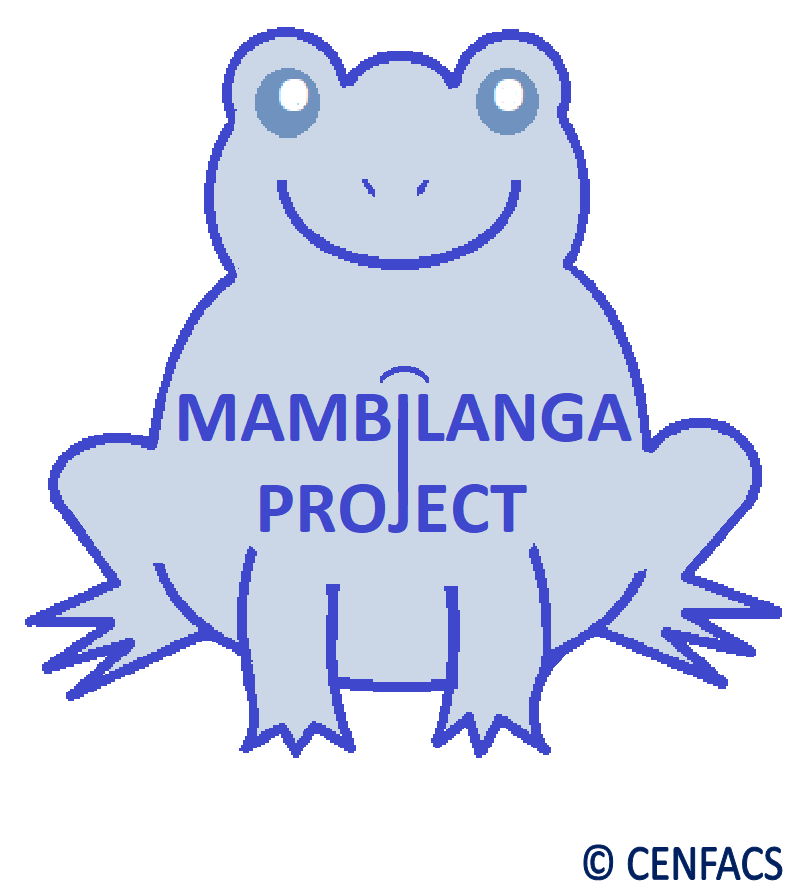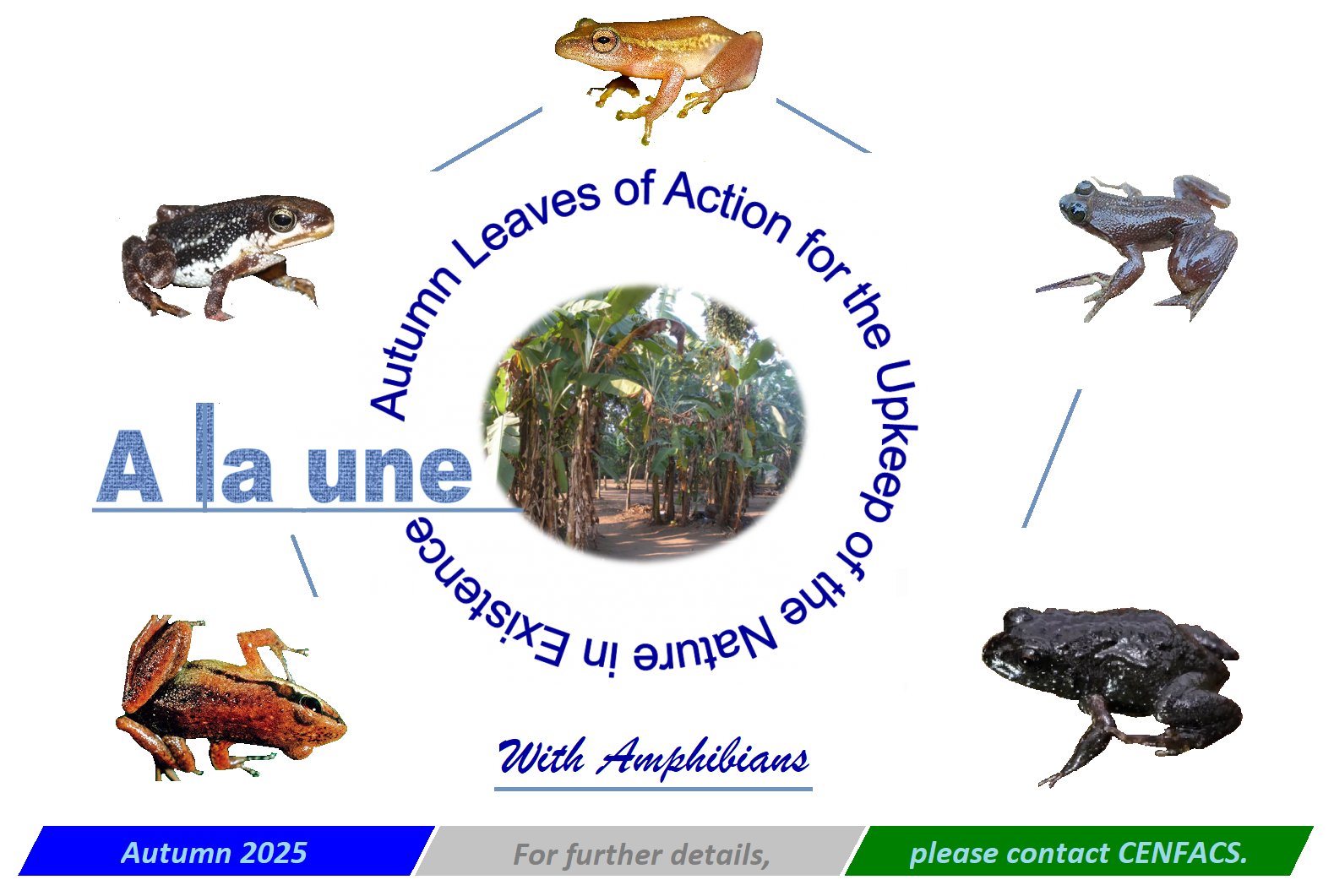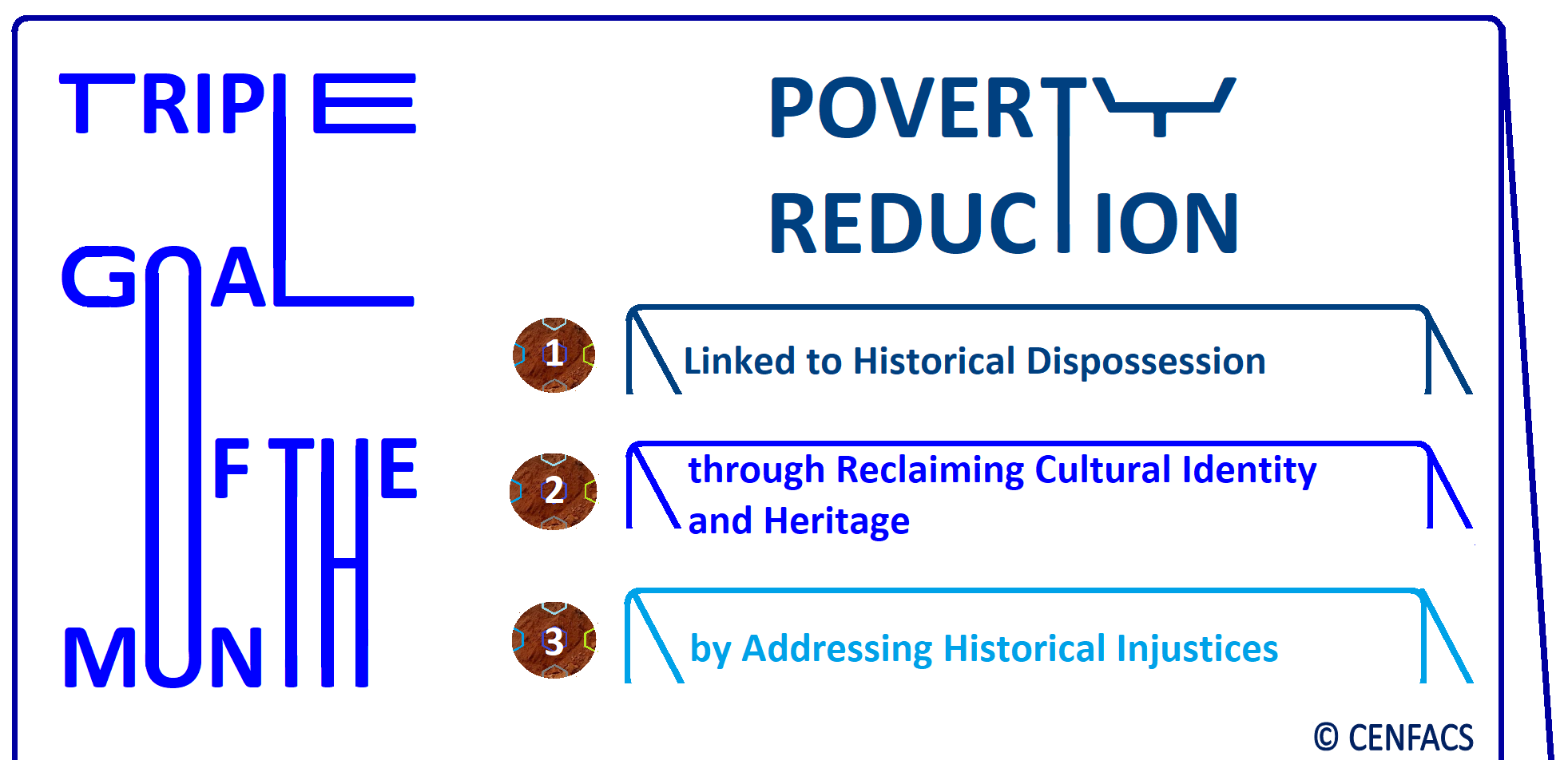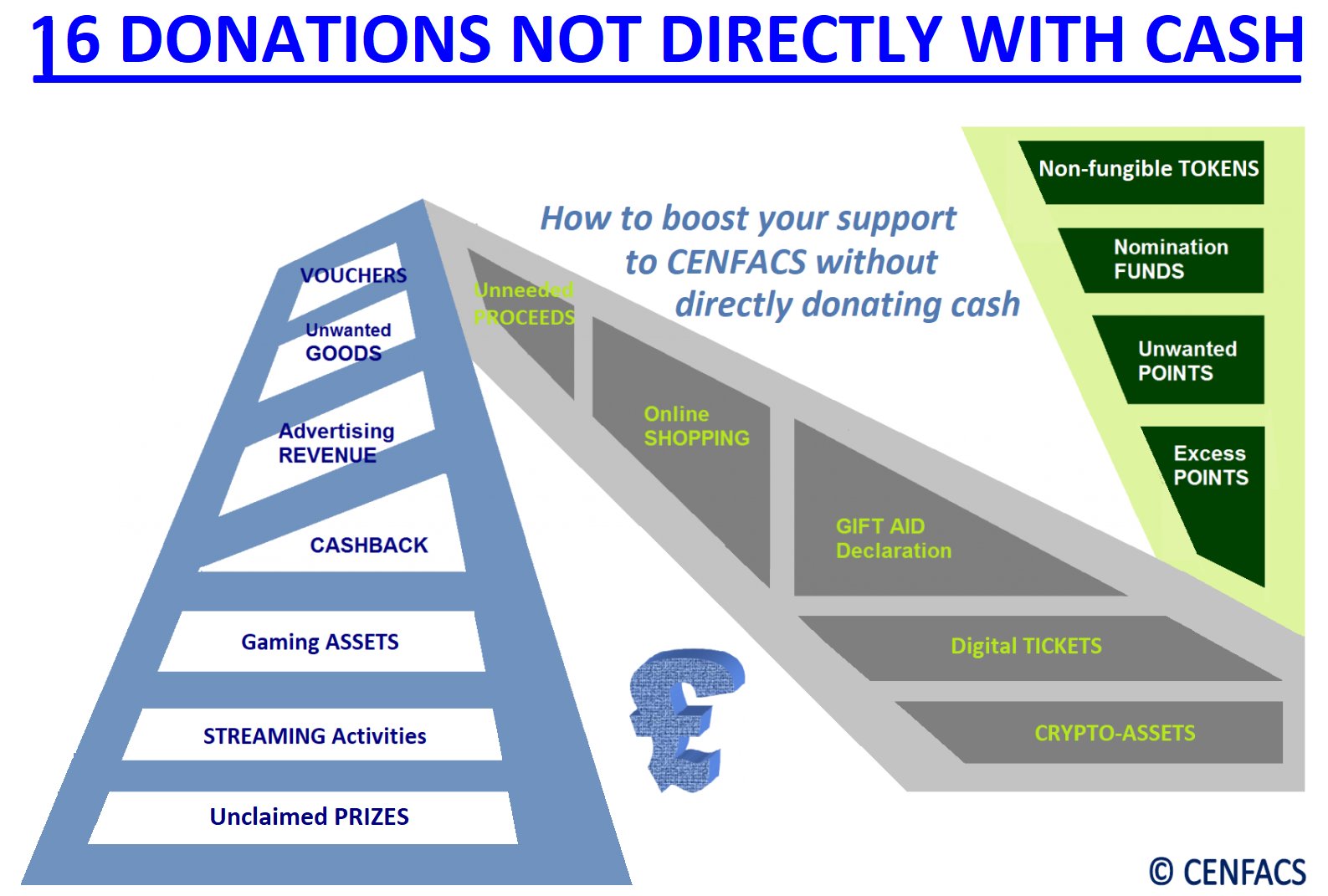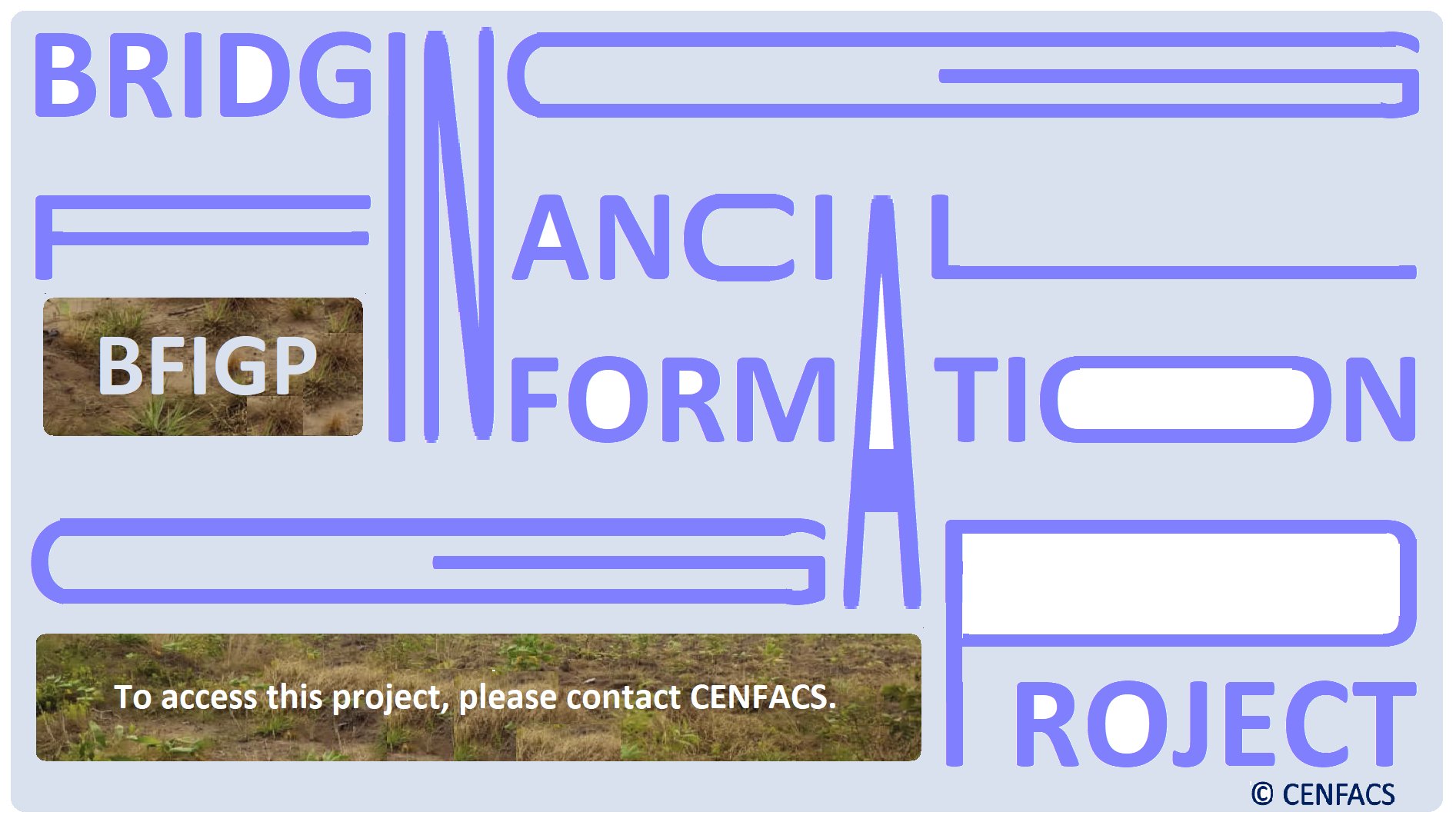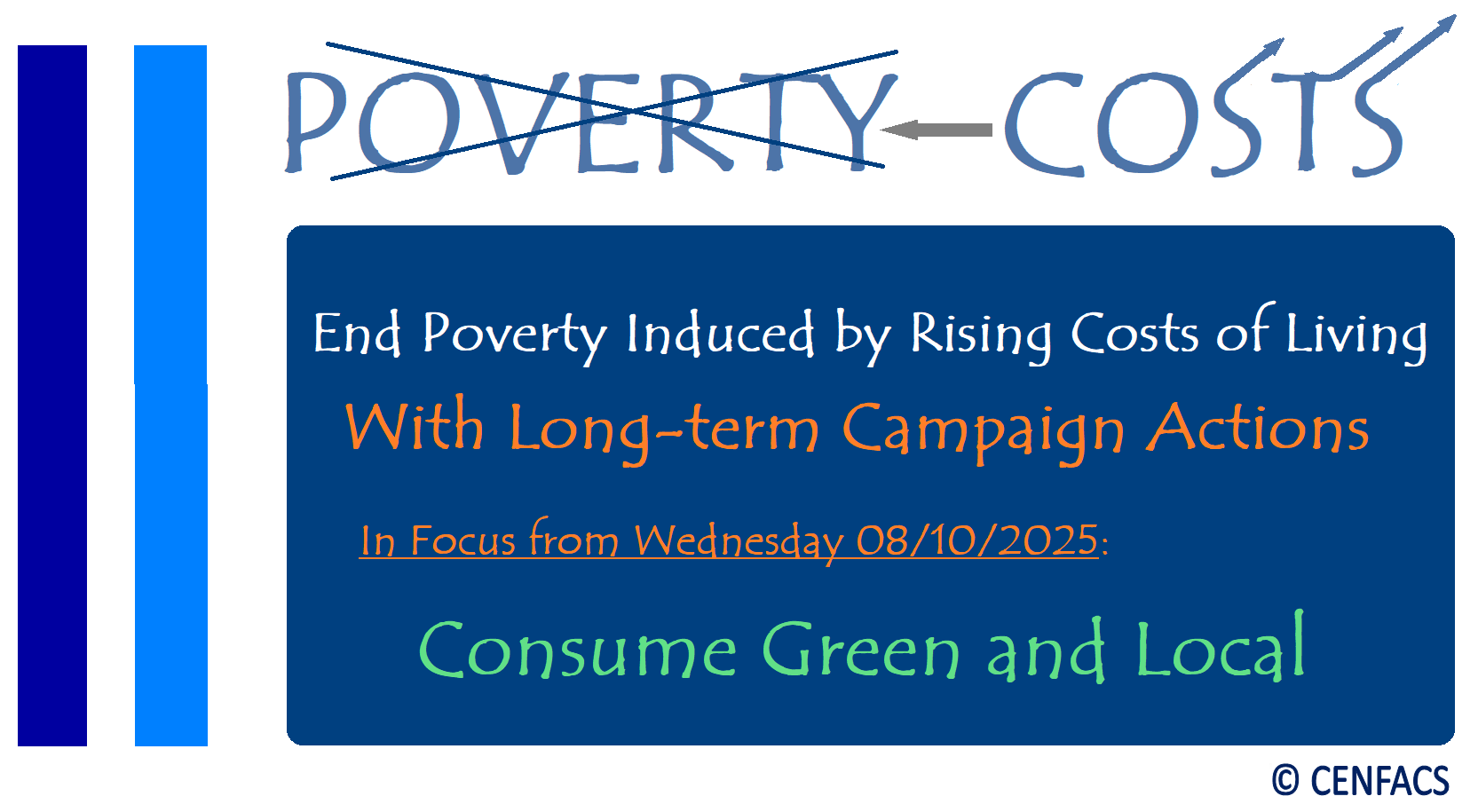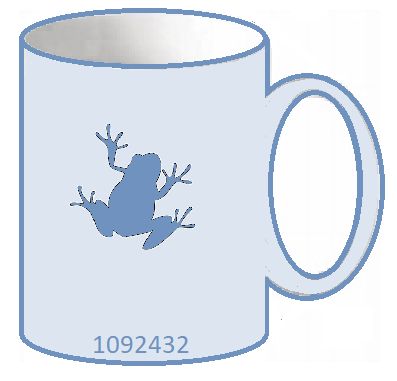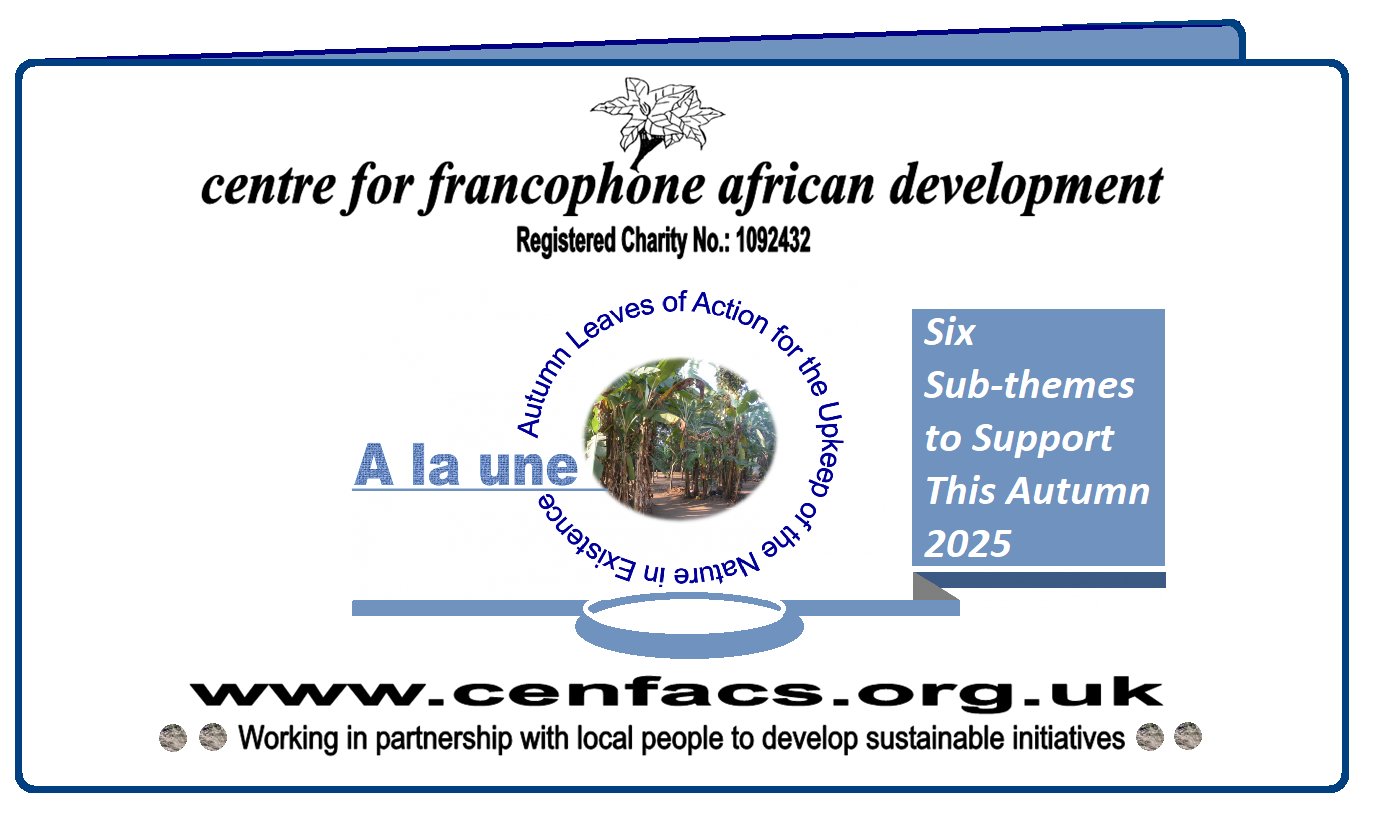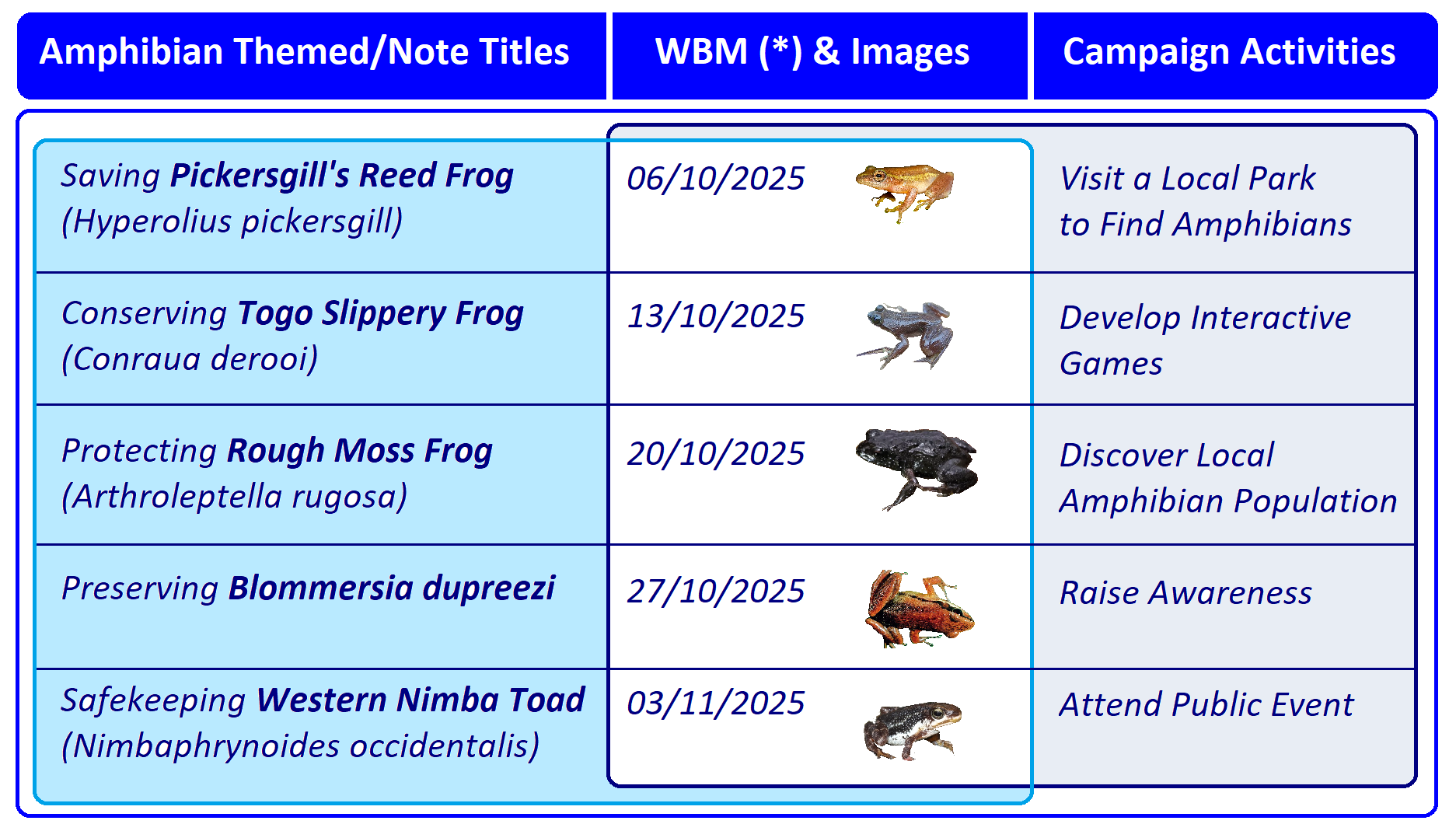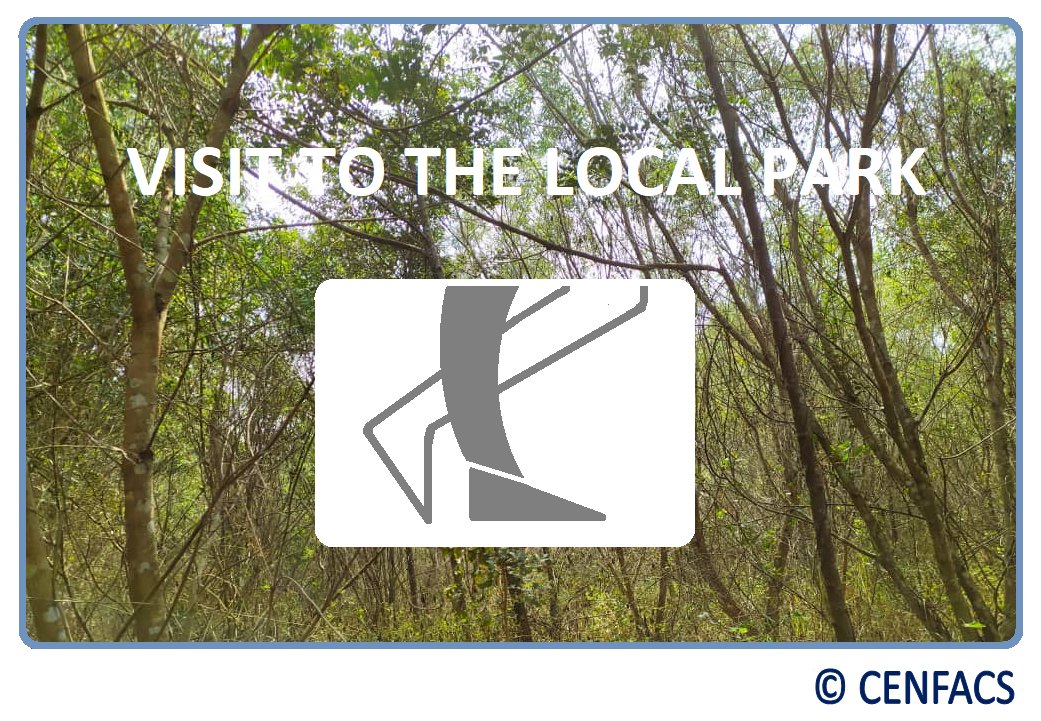Welcome to CENFACS’ Online Diary!
08 October 2025
Post No. 425
The Week’s Contents
• 2025 “A la une” (Autumn Leaves of Action for the Upkeep of the Nature in Existence) Campaign and Themed Activities via “MAMBILANGA” Project
• Triple Goal of the Month: Reduction of Poverty Linked to the Historical Dispossession, by Reclaiming Cultural Identity and Heritage, and Addressing Historical Injustices
• Making Donations Not Directly with Cash
… And much more!
Key Messages
• 2025 “A la une” (Autumn Leaves of Action for the Upkeep of the Nature in Existence) Campaign and Themed Activities via “MAMBILANGA” Project
Our environmental campaign known as “A la une” has already started and is going to last for six weeks. The main theme of this campaign is still the same, which is Upkeep of the Nature; the sub-theme for this year’s campaign being Saving the Endangered Amphibian Species. This sub-theme will be delivered or conducted via “MAMBILANGA” Project.
MAMBILANGA – which is stands for Mind Amphibians for Maintaining the Balance of Insects in the Lives of Aquatics and Nutrients, and for Guarding Agriculture – is a new advocacy project planned by CENFACS to help protect critically endangered amphibian species and keep them up in their natural habitat in Africa.
As said, this year’s campaign is about the upkeep of endangered amphibian species. It is an action to reduce and stop extinction risk and threat that amphibian species like
Pickersgill’s Reed Frog (Hyperolius pickersgill), Western Nimba Toad (Nimbaphrynoides occidentalis), Togo Slippery Frog (Conraua derooi), Rough Moss Frog (Arthroleptella rugosa), Blommersia Dupeezi, Krokosua Squeaking Frog (Arthroleptis krokosua), Atewa Slippery Frog, Manengouba Long-fingered Frog, Nsoung Long-fingered Frog, Rebelly Egg Frog, Alexterron jyux, Leopard Toad, Goliath Frog, Big-eyed Forest Tree Frog, Perret’s Night Frog, etc.,
are subject to.
These amphibian species are just a few examples of many more that are threatened and at risk of extinction.
Five of the above-mentioned examples of critically endangered amphibian species [that is, Pickersgill’s Reed Frog (Hyperolius pickersgill), Western Nimba Toad (Nimbaphrynoides occidentalis), Togo Slippery Frog (Conraua derooi), Rough Moss Frog (Arthroleptella rugosa), Blommersia Dupeezi] will make up selected composed notes or themed areas of our work; work that we will carry out together to shape the central topic or theme of “A la une” Campaign this Autumn.
We have provided, under the Main Development section of this post, the time frame and titles of these composed notes or themed areas of work as well as their related campaign activities.
The first themed area of work is Saving Pickersgill’s Reed Frog; themed area which kicked off on the 6th of October 2025.
For further information about this first note, please read under the Main Development section of this post.
• Triple Goal of the Month: Reduction of Poverty Linked to the Historical Dispossession, by Reclaiming Cultural Identity and Heritage, and Addressing Historical Injustices
This October 2025, our goal is triple:
σ Reduction of Poverty Linked to Historical Dispossession
σ Reduction of Poverty by Reclaiming Cultural Identity and Heritage
σ Reduction of Poverty by Addressing Historical Injustices.
Let us summarised each of the three elements making the triple goal of the month.
• • Summary of the Three Elements of Our Triple Goal of the Month
• • • Reduction of Poverty Linked to Historical Dispossession
Dispossession can involve illicitly or illegally seizing control of land and resources. This type of dispossession can create a cycle of poverty by dispossessing people of their livelihoods and assets. Historical dispossession (like primitive accumulation or colonialism) can create lasting structural inequalities that can hinder inclusive development and perpetuate poverty.
Since we are in the History Month, one can try to help reduce poverty caused by historical dispossession.
• • • Reduction of Poverty by Reclaiming Cultural Identity and Heritage
It is possible to reduce poverty by reclaiming cultural identity and heritage. Ways of doing it can include empowering marginalised communities, fostering economic development through cultural tourism, preserving unique local knowledge and skills for sustainable practices and rebuilding social cohesion and self-esteem. The process can involve community-led initiatives that link cultural expression to economic opportunities and create inclusive development models that benefit those who have been historically excluded.
• • • Reduction of Poverty by Addressing Historical Injustices
Addressing historical injustices can be a form of reducing poverty for the victims of these injustices or their future generations. Indeed, mechanisms like transitional justice can help resolve past wrongs and reduce present-day material disadvantage and discrimination. This can require the following strategies: investing in public services, ensuring access to resources and opportunities, implementing fiscal policies that reduce inequalities, and eliminating discriminatory laws and practices that perpetuate systemic barriers to progress.
In short, it is conceivable to reduce poverty linked to historical dispossession, by reclaiming cultural identity and heritage, and by addressing historical injustices. This is our triple goal of the month of October – History Month 2025. This goal is SMART (that is, Specific, Measurable, Achievable, Relevant, and Time-bound).
• • Implications for Selecting the Goal for the Month
After selecting the goal for the month, we focus our efforts and mind set on the selected goal by making sure that in our real life we apply it. We also expect our supporters to go for the goal of the month by working on the same goal and by supporting those who may be suffering from the type of poverty linked to the goal for the month we are talking about during the given month (e.g., October 2025).
For further details on the goal of the month, its selection procedure including its support and how one can go for it, please contact CENFACS.
• Making Donations Not Directly with Cash
How to support CENFACS without directly giving cash
Last month, we highlighted ways of supporting CENFACS and of boosting your support. This week, we are adding ways of backing us without you having to directly give cash to CENFACS as well as to its noble and beautiful causes. This is all part of improving the way in which you can make an impact on what CENFACS is doing to help reduce poverty and enhance sustainable development.
Indeed, there are many ways that one can use to help CENFACS without directly given cash. One can unlock barriers to make donations not directly with cash for CENFACS and CENFACS’ noble and beautiful causes. Those who would like to assist CENFACS by using other means than directly giving cash, they can think of the following.
16-themed ways of donating to consider this Autumn and in the lead up to the end of the year:
1) Giving unwanted goods and items to CENFACS e-charity store at http://cenfacs.org.uk/shop/(or by donating a portion of the sale price of your chosen selling platforms if you give items to other stores)
2) Sign up for a Gift Aid Declaration from which CENFACS can earn an extra 25p for every £1 you give as a UK taxpayer (i.e., this option allows CENFACS to reclaim an extra 25 per cent on every eligible donation made by you as a UK taxpayer)
3) Nominate CENFACS for a donation at charity fundraising and donation events (via online nomination forms)
4) Select CENFACS as your preferred charity for donation from advertising revenue (by aligning CENFACS‘ cause with your brand’s values and target audience)
5) Raise free funds for CENFACS with your online shopping or choose CENFACS as a donation recipient of some of the profits raised from online shopping (by employing online shopping fundraising platforms)
6) Donate your unwanted and unused points and cashback to CENFACS as your chosen charity from your loyalty shopping rewards or good causes’ gift cards (with dedicated charity cashback websites)
7) Name CENFACS as your favourite deserving cause if it happens that you have the opportunity to click the online option “donate cashback to charities” (by selecting CENFACS, entering the donation amount, and following the steps to apply the donation, and confirm the pay out)
8) Donate any unwanted excess points of your loyalty card from apps that may give support to good causes (by leveraging the charity donation feature within the retailer’s app)
9) Give away to CENFACS any vouchers received or earned that you do not need or want (by finding out if vouchers are from a voucher provider and by following the instructions on their website or the voucher itself)
10) Hand out to CENFACS any proceeds from unwanted or unneeded prize draw or award you prefer to get rid of (by ensuring the event follows gambling regulations, especially if it is a lottery or raffle)
11) If you are a gaming fundraiser, help CENFACS raise money it needs through your gaming fundraising capability (by creating a fundraising page, planning a sponsored gaming challenge, livestreaming the event on platforms, and using interactive features to encourage donations)
12) Help in online fundraising events like online or digital tickets selling (by selecting a dedicated charity fundraising platform allowing you to create event pages and sell digital tickets or using a general event platform)
13) If you are gaming as a good causes and fundraising livestream donor, you can also support CENFACS (by livestreaming your gameplay and encouraging viewers to donate to a linked fundraising page)
14) If you are running gaming and livestreaming campaigns, you can remember CENFACS in your campaigns (by setting a clear fundraising goal, planning engaging content with interactive platform and fundraising tools)
15) Give cryptocurrency donations (by finding a crypto-friendly charity or a platform, selecting the specific currency you want to donate and initiate the transaction)
16) Donate the proceeds of sales of non-fungible tokens (NFTs) to streamline CENFACS‘ processes of reducing poverty and enhancing sustainable development (by selling the NFT and donating the proceeds via one-time charitable contribution or committing to donate a percentage of royalties, either from your mint or secondary sale of the NFT).
The above sixteen-themed forms of not directly donating cash allow donors to engage with their chosen causes among the variety of projects offered by CENFACS in ways that resonate with their personal values and interests. They are just the few examples of ways of helping that one can think over or come across with to support CENFACS without having to directly give cash. However, this does not mean one cannot donate cash. Of course, they can and if they choose to donate cash, CENFACS will happily accept their cash donations.
To support CENFACS without directly giving cash and or by directly donating cash, just contact CENFACS.
Extra Messages
• Campaign to End Poverty Induced by High Costs of Living through Long-term Actions – In Focus from 08/10/2025: Consume Green and Local
• Financial Plan Updates for Households in 2025 – Third Update from Wednesday 08/10/2025: Households’ Financial Response to Economic and Market Changes
• Intergenerational Financial Planning for Families – In Focus from Week Beginning Monday 06/10/2025: Strategy for Regular Review of Intergenerational Financial Plan
• Campaign to End Poverty Induced by High Costs of Living through Long-term Actions – In Focus from 08/10/2025: Consume Green and Local
Consume Green and Local is the second long-term campaign action of our Campaign to End Poverty Induced by High Costs of Living. Perhaps, the best way of approaching this action is to highlight the relationships between consuming green and a lower cost of living, between consuming locally and a lower cost of living.
• • Relationship between Consuming Green and a Lower Cost of Living
Studies and facts show that there is a significant relationship between consuming green/sustainable and a lower cost of living. Yet, opinions diverge over this relationship as some think that green habits help save money while others find green products more expensive. Despite this division of opinions, taking the following sustainable actions can help cut household expenses, especially for households living on a tight budget:
σ Reducing energy use and consumption
σ Consuming less
σ Repairing and reusing items
σ Growing food
σ Buying second-hand
Etc.
So, reducing consumption costs can in the long run help end poverty induced by the high costs of living.
There are factors influencing this relationship such as financial motivation, perceived costs of green products, economic pressures and inflation, becoming ‘greener’ as a default rather than believing in the environment.
• • Relationship between Consuming Locally and a Lower Cost of Living
Consuming locally can help lower the overall cost of living by keeping money within the community and supporting local economy, production and businesses. Local economies benefit from money circulating locally, which can lead to an improved distribution of wealth and more accessible jobs and resources for residents. By reducing reliance on expensive, long-distance shipping for goods, consumers can potentially access more affordable products and services, especially when combined with local production and fair wages. Besides lowering the cost of living, consuming locally can create wealth within the community and locally.
To sum up, Consuming Green and Local can be incorporated in the long-term strategy to End Poverty Induced by High Costs of Living.
Those who will be interested in this second campaign action and would like to join it, they should not hesitate to contact CENFACS.
Those who have any enquiries and or queries about Campaign to End Poverty Induced by High Costs of Living through Long-term Actions, they can address them to CENFACS.
• Financial Plan Updates for Households in 2025 – Third Update from Wednesday 08/10/2025: Households’ Financial Responses to Economic and Market Changes
Most sensible households act when there are changes in the economy and market. To illustrate this, let us first deal with economic and market changes, then look at households’ financial response.
• • Economic and Market Changes
These changes can significantly impact markets, affecting trade agreements, currency fluctuations, and supply chain disruptions. Understanding these dynamics can help households to adapt and seize opportunities in a rapidly evolving economic landscape. Their responses can be influenced by various factors, including income shocks, cost of living pressures, and consumer confidence.
• • Households’ Financial Responses
They are about how households act when there is a financial shock. It emerges from ‘hks.harvard.edu’ (1) that research indicates that households adjust their spending, saving and borrowing behaviour in responses to these changes, with significant variations in their intertemporal marginal propensities to consume and deleverage. These adjustments are not solely based on socioeconomic or financial characteristics but also involve psychological factors, past experiences, and expectations. The study of household financial decision-making reveals a range of motivations behind these decisions leading to the identification of four household types: strongly constrained, precautionary, quasi-smoothers, and spenders. These types of households exhibit similar financial actions but stem from diverse reasons, challenging the predictability of financial behaviour based on socioeconomic and financial characteristics alone.
Similarly, ‘blog.ons.gov.uk’ (2) notices that
“Households’ financial responses to shocks can vary significantly based on their income level, employment status, and access to savings and credit”.
For instance, households’ financial responses could be having a savings buffer (with 76% able to cover a 25% fall in household employment income) and or a financial resilience (which involves having sufficient savings to cover unexpected income falls and managing debts and arrears).
Households making CENFACS Community also build savings buffer and financial resilience to respond to economic and market changes. They may need to know more about strategies or ways of better responding to these changes.
• • Working with CENFACS Community Members on Households’ Financial Responses via a Weekend Homework for Households
As a way of supporting this week’s topic relating to Households’ Financial Responses to Economic and Market Changes, we are asking to those who can to conduct this weekend homework activity:
Discuss Your Household Financial Resilience.
Those who may have some questions about this activity, they should not hesitate to contact CENFACS.
Those who may be interested in the Households’ Financial Responses to Economic and Market Changes can contact CENFACS for further details.
• • Last Words about Financial Plan Updates 2025 Series
In the last 5 weeks, we worked with households on Financial Plan Updates 2025 Series. This new series of updates aimed at building a more secure financial future for these households through financial skills and knowledge so that they can navigate their financial futures more comfortably and affectively.
The updates were about ensuring that households making the CENFACS Community have the tools and resources necessary to better manage their finances. They reflect a broader effort to enhance household financial stability, support and well-being. These updates are part and fall under the scope of CENFACS Bridging Financial Information Gap Project.
We hope that those who worked with us throughout this 5-week series of financial actions have been able to update their financial plan or at least to get the clues on how to do it. We are still available to work with those who need support with their Financial Plan Updates or for us to look at their Financial Plan. If you are one of them, please do not hesitate to communicate with CENFACS with your request.
• Intergenerational Financial Planning for Families – In Focus from Week Beginning Monday 06/10/2025: Strategy for Regular Review of Intergenerational Financial Plan
Once a family creates its intergenerational financial plan, they need to keep an eye on it. In project planning parlance, it means they need to regularly review it. Regular reviews of intergenerational financial plan are essential to ensure that the plan remains effective and aligned with the evolving needs of the family.
To review its plan, the family is required to develop a strategy for regular review of its plan or a long-term view of the future success of its plan. This strategy needs to have some components. What are the components of this strategy?
• • Components of Strategy for Regular Reviews of Intergenerational Financial Plan
They include
σ Regularly evaluating the family’s financial position
σ Clearly defining the family’s goals and expectations
σ Maintaining open communication with family members about the financial plan
σ Educating the family members about the plan’s details and the family’s values and goals
σ Reviewing tax rules and estate planning laws
σ Involving younger family members in discussion about the financial plan
σ Consulting with financial advisors who specialise in intergenerational planning matters.
The above-mentioned elements will help families to have intergenerational financial plans that are relevant and effective as they navigate the complexities of wealth transfer and family dynamics.
• • Working with CENFACS Community Members on Strategy for Regular Review of Intergenerational Financial Plan via a Weekend Homework for Families
As a way of supporting this week’s topic relating to Strategy for Regular Review of Intergenerational Financial Plan, we are asking to those who can to conduct this weekend homework activity:
Find a Trigger for Reviewing Your Intergenerational Financial Plan.
Those who may have some questions about this activity, they should not hesitate to contact CENFACS.
Those who would like to know more about Strategy for Regular Review of Intergenerational Financial Plan and to work with CENFACS, they can contact us.
• • Final Thought
During the last 6 weeks, we tirelessly worked with those who wanted to dive into intergenerational financial planning. We worked together to ensure that families making our community can have a strategy to ensure the smooth transfer of their wealth down their future generations, in a controlled and tax efficient manner.
As ‘dysifa.com’ (3) puts it,
“An intergenerational approach can ensure the right family members have the right assets at the right time, while minimising any potential for family disputes or conflicts”.
Intergenerational Financial Planning can work better when everybody gets involved in the financial planning process. The plan is not only designed to leave something behind for the family. It is also about eliminating or at least significantly reducing poverty for future generations.
We hope that the overall topic of Intergenerational Financial Planning including the notes we provided throughout this 6-week campaign have been useful and will help those who would like to make a financial plan about the smooth transfer of wealth down their future generations.
Perhaps, we have not been able to cover some of the areas that some of you might have wanted us to cover in the notes. We apologise if your concerns have not been addressed. We are still available to work with those who want us to reflect their needs in the support we are providing on this matter.
Those who may be still interested in Intergenerational Financial Planning or in discussing any matter relating to the overall topic of Intergenerational Financial Planning, they should feel free to contact CENFACS. Equally, those who would like to tackle intergenerational poverty can communicate with CENFACS.
Message in English-French (Message en Anglais-Français)
• CENFACS’ be.Africa Forum E-discusses Fiscal Policies and Inequalities Reduction in Africa
To introduce this e-discussion, let us provide the definitions of fiscal policy and inequality. What is fiscal policy?
According to ‘financestrategists.com’ (4),
“Fiscal policy refers to government use of taxation and spending to influence the conditions of the economy. Typically, fiscal policy comes into play during a recession or a period of inflation, where conditions are escalating quickly enough to warrant government intervention”.
Fiscal policy can be progressive, proportional and regressive in terms of taxation. In the case of this e-discussion, we are mostly dealing with a progressive fiscal policy.
Speaking about progressive fiscal policy, ‘fastercapital.com’ (5) argues that
“Progressive fiscal policy uses progressive tax systems by imposing higher tax rates on those with greater incomes. This policy, which is mostly one of the Keynesian economics, aims at achieving economic stability and equitable wealth distribution”.
Progressive taxation is fiscal tool that can be used to create fairness and regulate aggregate demand within an economy, from the Keynesian perspective.
Knowing what is fiscal policy, let us briefly explain the other key word of our e-discussion, which is inequality. What is inequality?
The website ‘inezz.com’ (6) states that
“Inequality refers to the disparity or uneven distribution of wealth, income, opportunities, or resources among individuals or groups within a society or between different societies”.
Africa is a rich continent but with a huge level of inequalities that a fiscal policy can help reduce.
Indeed, progressive fiscal policies can significantly reduce inequalities in Africa. Progressive taxation for African countries that can afford them can allow higher-income individuals to contribute a larger share of their earnings to fund social programmes and redistribute wealth. Targeted spending can promote social mobility and reduce income disparities, which is one of the expression of inequality.
In Africa, many households pay more in taxes than they receive in transfers and subsidies, which perpetuates poverty and exacerbates inequality. As ‘theconersation.com’ (7) puts it,
“Most tax systems in Africa have relied on indirect taxes (such as Value Added Tax or consumption taxes) rather than progressive direct taxes on income and wealth. As as a result, poorer households often bear a heavier relative tax burden while the wealthiest benefit from exemptions or evasion”.
Progressive taxation can help level the playing field by ensuring that the rich contribute more to public purse. So, addressing fiscal imbalances can help reduce inequalities in Africa.
The above is the terms of our e-discussion. Those who may be interested in this discussion can join our poverty reduction pundits and/or contribute by contacting CENFACS’ be.Africa Forum, which is a forum for discussion on poverty reduction and sustainable development issues in Africa and which acts on behalf of its members by making proposals or ideas for actions for a better Africa.
To contact CENFACS about this discussion, please use our usual contact address on this website.
• Le Forum ‘Une Afrique Meilleure’ de CENFACS discute en ligne des Politiques fiscales et réduction des inégalités en Afrique
Pour introduire cette e-discussion, fournissons d’abord les définitions de la politique budgétaire et de l’inégalité. Qu’est-ce que la politique fiscale ?
Selon « financestrategists.com » (4), « La politique budgétaire fait référence à l’utilisation par le gouvernement de la fiscalité et des dépenses pour influencer les conditions de l’économie. En général, la politique budgétaire entre en jeu lors d’une récession ou d’une période d’inflation, lorsque les conditions évoluent assez rapidement pour justifier une intervention gouvernementale ».
La politique fiscale peut être progressive, proportionnelle et régressive en termes de taxation. Dans le cadre de cette discussion en ligne, nous traitons principalement de la politique fiscale progressive.
En parlant de politique fiscale progressive, ‘fastercapital.com’ (5) soutient que
« La politique fiscale progressive utilise des systèmes fiscaux progressifs en imposant des taux d’imposition plus élevés à ceux ayant des revenus plus élevés. Cette politique, qui est principalement issue de l’économie keynésienne, vise à atteindre la stabilité économique et une répartition équitable de la richesse ».
La taxation progressive est un outil fiscal qui peut être utilisé pour créer l’équité et réguler la demande globale au sein d’une économie, selon la perspective keynésienne. Sachant ce qu’est la politique fiscale, expliquons brièvement l’autre mot clé de notre discussion en ligne, qui est l’inégalité. Qu’est-ce que l’inégalité ?
Selon ‘inezz.com’ (6),
“L’inégalité fait référence à la disparité ou à la répartition inégale de la richesse, des revenus, des opportunités ou des ressources entre les individus ou les groupes au sein d’une société ou entre différentes sociétés”.
L’Afrique est un continent riche mais avec un niveau énorme d’inégalités qu’une politique fiscale peut aider à réduire.
En effet, des politiques fiscales progressives peuvent réduire considérablement les inégalités en Afrique. La fiscalité progressive pour les pays africains qui peuvent se le permettre permettrait aux individus à revenu élevé de contribuer davantage de leurs revenus au financement des programmes sociaux et à la redistribution des richesses. Les dépenses ciblées peuvent favoriser la mobilité sociale et réduire les écarts de revenus, qui sont l’une des manifestations de l’inégalité.
En Afrique, de nombreux ménages paient plus d’impôts qu’ils ne reçoivent de transferts et de subventions, ce qui perpétue la pauvreté et accentue les inégalités. Comme le dit ‘theconversation.com’ (7),
« La plupart des systèmes fiscaux en Afrique ont reposé sur des taxes indirectes (comme la TVA ou les taxes à la consommation) plutôt que sur des impôts directs progressifs sur le revenu et la richesse. Par conséquent, les ménages les plus pauvres supportent souvent une charge fiscale relative plus lourde tandis que les plus riches bénéficient d’exonérations ou d’évasion fiscale ».
Une fiscalité progressive peut aider à rétablir l’équité en veillant à ce que les riches contribuent davantage au budget public. Ainsi, le traitement des déséquilibres fiscaux peut contribuer à réduire les inégalités en Afrique.
Ce qui précède constitue les termes de notre discussion électronique. Ceux ou celles qui pourraient être intéressé(e)s par cette discussion peuvent se joindre à nos experts en réduction de la pauvreté et/ou contribuer en contactant le ‘me.Afrique’ du CENFACS (ou le Forum ‘Une Afrique Meilleure’ de CENFACS), qui est un forum de discussion sur les questions de réduction de la pauvreté et de développement durable en Afrique et qui agit au nom de ses membres en faisant des propositions ou des idées d’actions pour une Afrique meilleure.
Pour contacter le CENFACS au sujet de cette discussion, veuillez utiliser nos coordonnées habituelles sur ce site Web.
Main Development
• 2025 “A la une” (Autumn Leaves of Action for the Upkeep of the Nature in Existence) Campaign and Themed Activities via “MAMBILANGA” Project
The following covers the points making this Main Development:
∝ What is “A la une” (Autumn Leaves of Action for the Upkeep of the Nature in Existence)?
∝ “A la une” Campaign Sub-themes
∝ MAMBILANGA (that is, Mind Amphibians for Maintaining the Balance of Insects in the Lives of Aquatics and Nutrients, and for Guarding Agriculture) as a Focus of Our ‘A la Une’ Campaign 2025
∝ “A la une” Campaign Calendar
∝ Executing our “A la une” Campaign from Week Beginning 06/10/2025 by Focusing on Saving Pickersgill’s Reed Frog (Hyperolius pickersgill)
∝ Add-on Activity of the Week’s Campaign: Visit Your Local Park to Find Amphibians (that is, Frogs, Salamanders and Caecilians).
Before starting the first themed area of this year’s “A la une” Campaign, let us remind those who may not know or remember what is “A la une” Campaign.
• • What is “A la une” (Autumn Leaves of Action for the Upkeep of the Nature in Existence)?
“A la une” is CENFACS‘ well-known household campaign for justice towards for nature in the autumnal season.
It is about working together in organised and active way toward the goal of keeping up the nature in (good) existence.
It is about telling those who are in a position to help to fix the overexploitation and end extinction of natural species.
It is about gaining support for species for the benefits and gifts they provide to the nature and in the different areas of human life.
It is CENFACS’ branding or theme that holds to account those who are destroying the nature and its resources as well as it looks forward to positively transforming our relationships with nature while changing the way our society works.
Briefly, “A la une” Campaign, which has to be differentiated from one-time protest, has three attributes, which are:
a) It focuses on a concrete goal of keeping up the nature in (good) existence
b) It has specific outcomes for working with CENFACS‘ users to protect nature or the wilderness/wildlands
c) It helps to add up to similar efforts and work on protecting the nature.
“A la une” Campaign needs sub-themes to be completed.
• • “A la une” Campaign Sub-themes
Since we started this campaign, there have been many sub-themes or themed activities or projects. We can mention the five latest ones:
∝ Restoration of Ecological Infrastructures in 2020
∝ Safeguard of Crop Wild Relatives in 2021
∝ Mbulu (Mobilising for Birds’ Useful Life for Us) Project in 2022
∝ Niamankeke (Nurture Insects via Adaptive Management for Action on Nature that Keeps the Endangered as Key to our Environment) Project in 2023
∝ ‘Mbisi’ (Maintaining Bagrus In Situ Inhabitation) Project was a Focus of Our ‘A la Une’ Campaign 2024.
We are still working on these five ‘A la Une’ Campaign sub-themes or projects.
For example, we are looking at the Banana plant diseases (e.g., banana bunchy top disease and Fusarium wilt Tropical Race 4) which are posing a serious threat to economic growth and sustainable development as well as poverty reduction in Africa.
Those who would like more information about ‘A la Une’ Campaign sub-themes or projects, they can contact CENFACS.
Those who would like support them (that is, these five ‘A la Une’ Campaign sub-themes or projects), they can also contact CENFACS with their support.
This year, the sub-theme we have selected to deliver “A la une” Campaign is “MAMBILANGA“.
• • MAMBILANGA (that is, Mind Amphibians for Maintaining the Balance of Insects in the Lives of Aquatics and Nutrients, and for Guarding Agriculture) as a Focus of Our ‘A la Une’ Campaign 2025
‘MAMBILANGA’ is an advocacy for the endangered amphibian species. Amphibian is, according to ‘frogile.org (8), a cold-blooded vertebrate of the class Amphibia, comprising frogs, toads, newts, salamanders and caecilians.
‘MAMBILANGA’ is a new advocacy project planned by CENFACS to help protect critically endangered amphibian species and keep them up in their natural habitat in Africa.
In the 2023 State of the World’s Amphibians report (9), it is stated that
“41% of all amphibians are threatened with extinction – a sobering figure that should raise alarm bells and lead us to act. Mobilizing resources to find missing or lost species, protect
their native habitat, and breed them under human care for future reintroduction, are just a few of the many interventions in the conservation toolbox to stop and revert species declines”.
African amphibians – like Pickersgill’s Reed Frog (Hyperolius pickersgill), Western Nimba Toad (Nimbaphrynoides occidentalis), Togo Slippery Frog (Conraua derooi), Rough Moss Frog (Arthroleptella rugosa), and Blommersia Dupeezi – are critically endangered species. We have selected them to work on them as a way of raising awareness of the extinction threat that amphibians like them face as well as to implement ‘A la Une’ Campaign.
To execute ‘MAMBILANGA’ project and this year’s ‘A la Une’ Campaign., we have drawn up a calendar of work.
• • “A la une” Campaign Calendar
• • • Six Weeks of Campaign for the Upkeep of the Nature
As announced earlier, we have started our 6-week campaign work for the Upkeep of the Nature. The campaign will help in promoting healthy relationships between humans and nature by taking actions to reduce the decline and extinction threat that some types of Amphibian Species are facing. It will also help in the fight against the contributing factors to this decline or extinction threat.
As outlined earlier, the sub-theme of “A la une” for this year is Saving the Endangered Amphibian Species delivered via “MAMBILANGA” Project while the “A la une” theme remains the same which is Upkeep of the Nature.
Within these theme and sub-theme, we have composed six notes including monitoring, evaluation and review of the “A la une” Campaign. These notes are in fact campaign actions that can be taken to Save Endangered Amphibian Species.
• • • “A la une” Campaign Composed Notes or Themed Areas for Action
There are five amphibian themed names and five activities to back this campaign. During the following periods within this Autumn and “A la une” season, CENFACS’ advocacy on environment will focus on the following amphibian themed names and activities from the beginning of every Mondays (starting from 06 October 2025 to 9 November 2025).
Note to “A la une” Campaign calendar: (*) WBM means Week Beginning Monday
In total, there are five amphibian themed names which make areas of work and action starting from the 06th of October 2025 and thereafter every Mondays until the 9th of November 2025. The campaign activities related to each of the amphibian-themed names not only provide educational benefits but also foster a deeper understanding of amphibians and their importance to the ecosystems.
From the 10th to the 16th of November 2025, we shall carry out Impact Monitoring, Evaluation and Review of the “A la une” Campaign and Themed Activities conducted.
The above-mentioned amphibian themed titles and activities will help us to re-communicate our environmental message for the upkeep of the nature in (good) existence as well as triggering better changes the way in which our community/society works.
As you can notice, besides each of these amphibian themed names, there are activities to be carried out. The activities are about how amphibians (particularly frogs among them) diversely contribute to human life and society. They are about exploring the intricate web of human-amphibian relationships.
The notes are supposed to guide our action since “A la une” Campaign is about actions, not words. During the run and at the end of these notes and actions, we shall pull impact monitoring and evaluation reports. We shall as well review the campaign results to see how it performed overall and if we achieved our goal, that is “MAMBILANGA“ (Mind Amphibians for Maintaining the Balance of Insects in the Lives of Aquatics and Nutrients, and for Guarding Agriculture).
To engage with “A la une” Campaign and themed areas as well as to act for a healthy and wealthy nature, please contact CENFACS.
• • Executing our “A la une” Campaign from Week Beginning 06/10/2025 by Focusing on Saving Pickersgill’s Reed Frog (Hyperolius pickersgill)
To help save Pickersgill’s Reed Frog (Hyperolius pickersgill), let us provide the definition of this species, its conservation status, and what can be done to save it.
• • • What is Pickersgill’s Reed Frog (Hyperolius pickersgill)?
It emerges from the literature review of frogs, Pickersgill’s Reed Frog – also known by the scientific name of Hyperolius pickersgill – is a small to medium-sized frog endemic to South Africa, primarily fund in the coastal lowlands of KwaZulu-Natal. It is a species from the family Hyperoliidae.
• • • Is Pickersgill’s Reed Frog (Hyperolius pickersgill) Critically Endangered?
Most of the studies surveyed indicate that Pickersgill’s Reed Frog (Hyperolius pickersgill) is a critically endangered frog species. According to ‘sandi.org’ (10),
“The Species is currently listed as Critically Endangered B2ab (ii, iii) on the IUCN (2010) Red List of Threatened Species, due to its very small area of occupancy, severe fragmentation of its habitat and continuing decline in the quality of its habitat and area of occupancy”.
Because it is critically endangered, Pickersgill’s Reed Frog (Hyperolius pickersgill) needs to be saved from threats and risks to extinction.
• • • What can be done to save Pickersgill’s Reed Frog (Hyperolius pickersgill)
There are several projects helping to save Pickersgill’s Reed Frog (Hyperolius pickersgill) across Africa. These projects include actions that can be taken to save Pickersgill’s Reed Frog (Hyperolius pickersgill). Amongst these actions, we can mention the following ones:
σ Protect key wetlands that are crucial for the survival of the Pickersgill’s Reed Frog (Hyperolius pickersgill) and other species in the area;
σ Raise public awareness about the conservation status of the Pickersgill’s Reed Frog (Hyperolius pickersgill) and the importance of protecting its habitat;
σ Develop and implement a conservation management plan to guide long-term protection of the species and its habitat;
σ Utilise captive breeding programmes to ensure the survival of the species and to prepare for potential reintroduction into the wild;
σ Collaborate with landowners to secure habitats for the Pickersgill’s Reed Frog (Hyperolius pickersgill) and to mitigate the impacts of urban development and other threats.
The above-mentioned actions can help save Pickersgill’s Reed Frog (Hyperolius pickersgill) and its future life.
Besides the above-mentioned actions, there are other initiatives one can take to help save the Pickersgill’s Reed Frog (Hyperolius pickersgill) population. One of these other actions is to support the good causes working on Pickersgill’s Reed Frog (Hyperolius pickersgill) matter.
The above actions will help to reduce extinction risks and threats to Pickersgill’s Reed Frog (Hyperolius pickersgill), which is critically endangered amphibian species in Africa.
• • Add-on Activity of the Week’s Campaign: Visit Your Local Park to Find Amphibians (that is, Frogs, Salamanders and Caecilians)
As a quiet and observant visitor to the park, one can find amphibians in the park.
• • • Finding amphibians in the park
To find amphibians – like frogs, toads, and newts – in a local park, one needs to look for damp vegetated areas near freshwater sources such as ponds, lakes, or even compost heaps. It is preferable to visit the park during the Spring or early Summer when they are most active searching in moist leaf litter, under logs, or near the water’s edge. Because we are in Autumn, one can always give themselves a try to see if there is any chance to find amphibians in their local park.
• • • When and where to find these amphibians in the park
Frogs and toads can be seen through most of the year in damp areas. Newts can be found in their moist, spongy or warty skin, which is different from the dry, scaly skin of a lizard. In the spring, one might find frogspawn (eggs) in ponds or lakes.
To find these elusive creatures, one is required to be quiet and observant visitor to increase their chances of spotting them in their natural habitat. Their sounds can also help to find them.
Those who will be carried out this visiting activity can inform or report to CENFACS about their findings.
The above is our first note of the “A la une” Campaign for this year.
To find out more about this first note and/or the entire “A la une” Campaign, please contact CENFACS.
_________
• References
(1) https://www.hks.harvard.edu/centers/mrcbg/programs/growthpolicy/how-and-why-household-reactions-income-shocks (accessed in October 2025)
(2) https://blog.ons.gov.uk/2025/09/30/updating-and-improving-our-view-of-the-uk-economy/ (accessed in October 2025)
(3) https://dysifa.com/wp-content/uploads/2024/11/An-Introduction-to-Intergenerational-Planning.pdf (accessed in August 2025)
(4) https://www.financestrategists.com/wealth-management/macroeconomics/fiscal-policy/ (accessed in October 2025)
(5) https://fastercapital.com/content/Fiscal-Policy–Fiscal-Policy–Crafting-Progressive-Taxation-for-Economic-Stability.html (accessed in October 2025)
(6) https://inezz.com/definitions/inequality/ (accessed in October 2025)
(7) https://theconversion.com/inequality-in-africa-what-drives-it-how-to-end-it-and-what-some-countries-are-getting-right-265265 (accessed in October 2025)
(8) https://www.frogile.org/info-advice/frequently-asked-questions/glossary (accessed in October 2025)
(9) https://www.amphibians.org/resources/state-of-the-worlds-amphibians/ (accessed in October 2025)
(10)https://www.sandi.org/animal-of-the-week/pickersgills-reed-frog/ (accessed in October 2025)
_________
• Help CENFACS Keep the Poverty Relief Work Going This Year
We do our work on a very small budget and on a voluntary basis. Making a donation will show us you value our work and support CENFACS’ work, which is currently offered as a free service.
One could also consider a recurring donation to CENFACS in the future.
Additionally, we would like to inform you that planned gifting is always an option for giving at CENFACS. Likewise, CENFACS accepts matching gifts from companies running a gift-matching programme.
Donate to support CENFACS!
FOR ONLY £1, YOU CAN SUPPORT CENFACS AND CENFACS’ NOBLE AND BEAUTIFUL CAUSES OF POVERTY REDUCTION.
JUST GO TO: Support Causes – (cenfacs.org.uk)
Thank you for visiting CENFACS website and reading this post.
Thank you as well to those who made or make comments about our weekly posts.
We look forward to receiving your regular visits and continuing support until the end of 2025 and beyond.
With many thanks.
